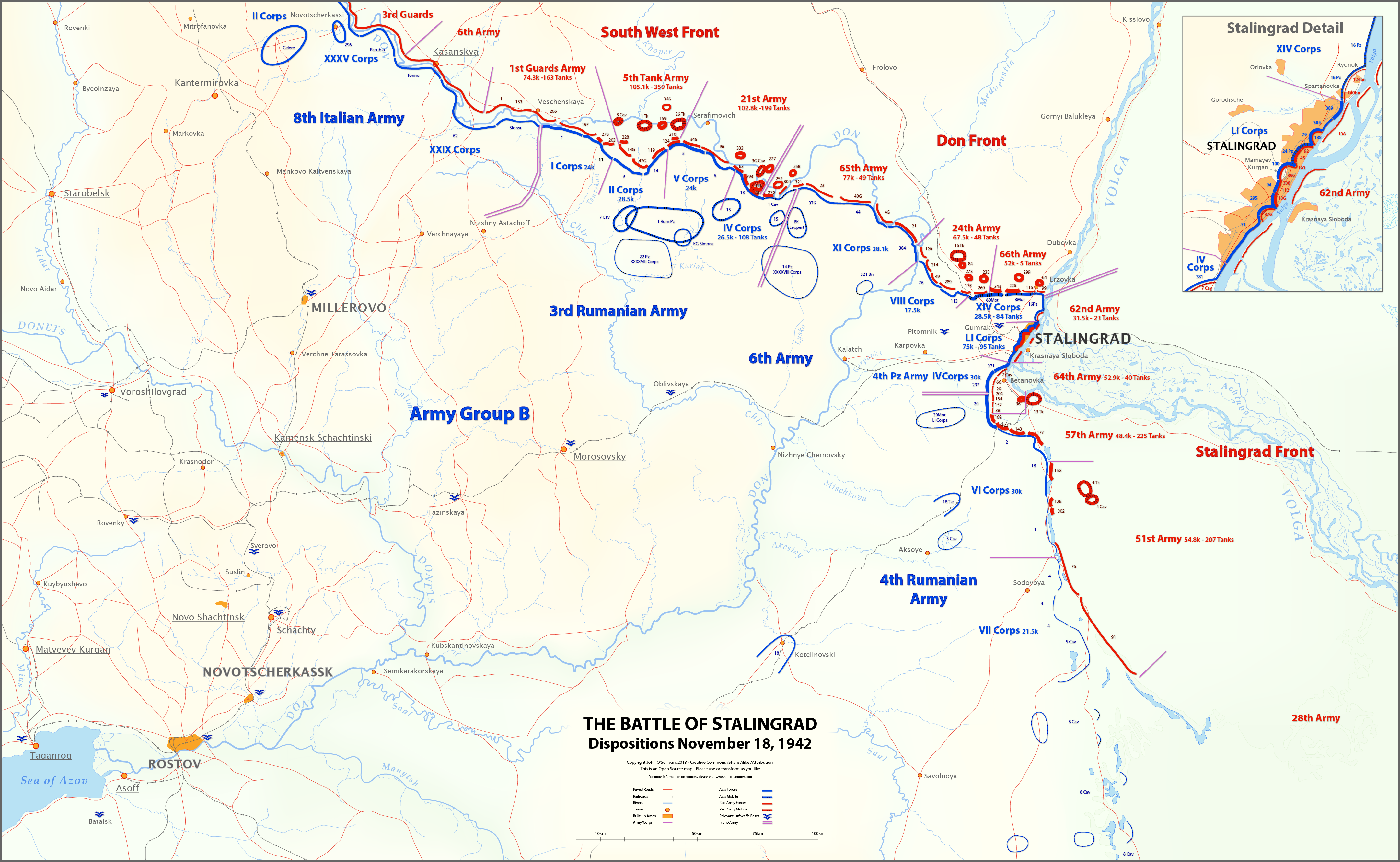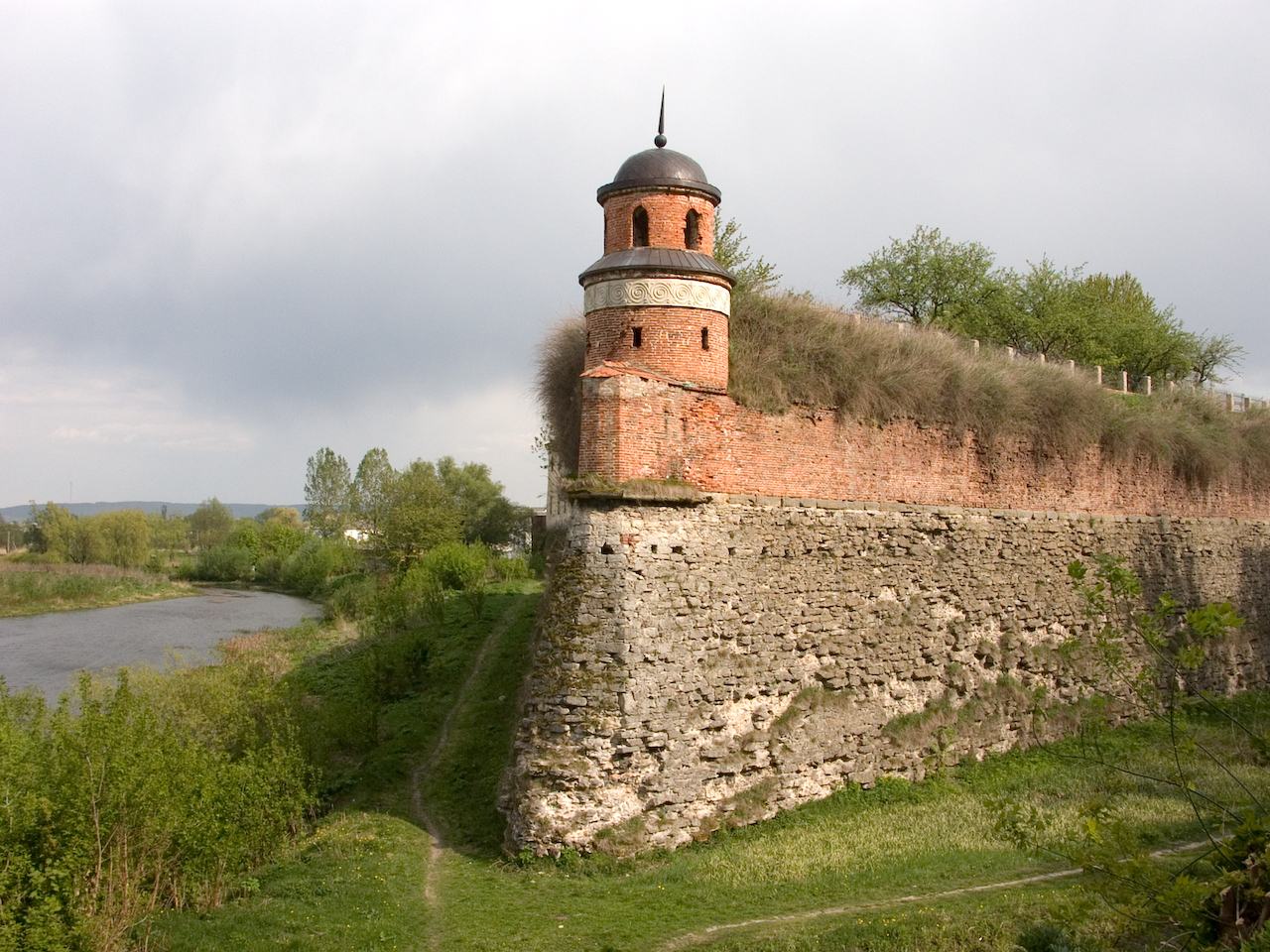|
203 Mm Howitzer M1931 (B-4)
203 mm howitzer M1931 (B-4) (russian: 203-мм гаубица обр. 1931 г. (Б-4), GRAU index 52-G-625) was a 203 mm (8 inch) Soviet high-power heavy howitzer. During the Second World War, it was under the command of the Stavka's strategic reserve. It was nicknamed "Stalin's sledgehammer" by German soldiers. These guns were used with success against Finnish pillboxes at the Mannerheim Line, heavy German fortifications and in urban combat for destroying protected buildings and bunkers. These guns were used until the end of the war in the Battle of Berlin, during which the Red Army used them to smash German fortifications at point blank range with their heavy 203mm shells. In the spring of 1944, a KV-1S tank chassis was used to create a self-propelled variant, the S-51. The heavy recoil from the muzzle blast threw the crew off their seats and damaged the transmission, and so it was cancelled. With an elevation angle of up to 60 degrees and 12 propellant loads t ... [...More Info...] [...Related Items...] OR: [Wikipedia] [Google] [Baidu] |
Soviet Union
The Soviet Union,. officially the Union of Soviet Socialist Republics. (USSR),. was a transcontinental country that spanned much of Eurasia from 1922 to 1991. A flagship communist state, it was nominally a federal union of fifteen national republics; in practice, both its government and its economy were highly centralized until its final years. It was a one-party state governed by the Communist Party of the Soviet Union, with the city of Moscow serving as its capital as well as that of its largest and most populous republic: the Russian SFSR. Other major cities included Leningrad (Russian SFSR), Kiev (Ukrainian SSR), Minsk ( Byelorussian SSR), Tashkent (Uzbek SSR), Alma-Ata (Kazakh SSR), and Novosibirsk (Russian SFSR). It was the largest country in the world, covering over and spanning eleven time zones. The country's roots lay in the October Revolution of 1917, when the Bolsheviks, under the leadership of Vladimir Lenin, overthrew the Russian Provisional Government ... [...More Info...] [...Related Items...] OR: [Wikipedia] [Google] [Baidu] |
Titan-Barrikady
Titan-Barrikady (russian: Титан-Баррикады) is a military-industrial company based in Volgograd, Russia. It was formed in 1914, after the merger between the Barrikady Production Association and the Titan Design Bureau. It is a subsidiary of the Moscow Institute of Thermal Technology. History The plant was established in 1914 as the Tsaritsyn Weapons Factory, and renamed Red Barricades after the Russian Revolution. It was for a time the largest munition factory in Europe. Titan had its origins as the factory's design bureau. The factory was overrun and destroyed by the Germans in 1942 during Fall Blau, but resumed production in 1944. In 1975 the plant was selected to manufacture the gun and mount for the 2S7 Pion. The Titan Design Bureau was separated from the factory in 1990. Barrikady plant Barrikady is a major manufacturer of heavy machinery and large steel castings and forgings. Its manufacturing facilities include the Barrikady Drilling Equipment Plant, one o ... [...More Info...] [...Related Items...] OR: [Wikipedia] [Google] [Baidu] |
280 Mm Mortar M1939 (Br-5)
The 280 mm mortar M1939 (Br-5) (russian: 280-мм мортира образца 1939 года (Бр-5)) was a Soviet heavy artillery piece used during World War II, it was the Red Army's heaviest field piece during the war. Design The Br-5 mortar was a calibre towed mortar with a barrel 14.2 calibres long. The Br-5 mortar shared the same tracked, box trail carriage as the 152 mm gun M1935 (Br-2) and the 203 mm howitzer M1931 (B-4). The carriage allowed transportation of the weapon over short distances with the speed of , for longer distances the barrel was removed from the carriage and transported separately on a special wheeled cart, the Br-10, a speed of was possible with the barrel removed.The artillery department of the Red Army (Главное артиллерийское управление РККА), ''203-mm howitzer 1931 (B-4), 280-mm mortar 1939 (Br-5) and 152-mm gun 1935 (Br-2) service manual (203-мм гаубица обр. 1931 г. (Б-4), 280-мм мор� ... [...More Info...] [...Related Items...] OR: [Wikipedia] [Google] [Baidu] |
152 Mm Gun M1935 (Br-2)
Fifteen or 15 may refer to: *15 (number), the natural number following 14 and preceding 16 *one of the years 15 BC, AD 15, 1915, 2015 Music *Fifteen (band), a punk rock band Albums * ''15'' (Buckcherry album), 2005 * ''15'' (Ani Lorak album), 2007 * ''15'' (Phatfish album), 2008 * ''15'' (mixtape), a 2018 mixtape by Bhad Bhabie * ''Fifteen'' (Green River Ordinance album), 2016 * ''Fifteen'' (The Wailin' Jennys album), 2017 * ''Fifteen'', a 2012 album by Colin James Songs * "Fifteen" (song), a 2008 song by Taylor Swift *"Fifteen", a song by Harry Belafonte from the album '' Love Is a Gentle Thing'' *"15", a song by Rilo Kiley from the album ''Under the Blacklight'' *"15", a song by Marilyn Manson from the album ''The High End of Low'' *"The 15th", a 1979 song by Wire Other uses *Fifteen, Ohio, a community in the United States * ''15'' (film), a 2003 Singaporean film * ''Fifteen'' (TV series), international release name of ''Hillside'', a Canadian-American teen drama *Fif ... [...More Info...] [...Related Items...] OR: [Wikipedia] [Google] [Baidu] |
Hero Of The Soviet Union
The title Hero of the Soviet Union (russian: Герой Советского Союза, translit=Geroy Sovietskogo Soyuza) was the highest distinction in the Soviet Union, awarded together with the Order of Lenin personally or collectively for heroic feats in service to the Soviet state and society. Overview The award was established on 16 April 1934, by the Central Executive Committee of the Soviet Union. The first recipients of the title originally received only the Order of Lenin, the highest Soviet award, along with a certificate (грамота, ''gramota'') describing the heroic deed from the Presidium of the Supreme Soviet of the USSR. Because the Order of Lenin could be awarded for deeds not qualifying for the title of hero, and to distinguish heroes from other Order of Lenin holders, the Gold Star medal was introduced on 1 August 1939. Earlier heroes were retroactively eligible for these items. A hero could be awarded the title again for a subsequent heroic feat with ... [...More Info...] [...Related Items...] OR: [Wikipedia] [Google] [Baidu] |
Ivan Vedmedenko
Ivan () is a Slavic male given name, connected with the variant of the Greek name (English: John) from Hebrew meaning 'God is gracious'. It is associated worldwide with Slavic countries. The earliest person known to bear the name was Bulgarian tsar Ivan Vladislav. It is very popular in Russia, Ukraine, Croatia, Serbia, Bosnia and Herzegovina, Slovenia, Bulgaria, Belarus, North Macedonia, and Montenegro and has also become more popular in Romance-speaking countries since the 20th century. Etymology Ivan is the common Slavic Latin spelling, while Cyrillic spelling is two-fold: in Bulgarian, Russian, Macedonian, Serbian and Montenegrin it is Иван, while in Belarusian and Ukrainian it is Іван. The Old Church Slavonic (or Old Cyrillic) spelling is . It is the Slavic relative of the Latin name , corresponding to English ''John''. This Slavic version of the name originates from New Testament Greek (''Iōánnēs'') rather than from the Latin . The Greek name is in turn d ... [...More Info...] [...Related Items...] OR: [Wikipedia] [Google] [Baidu] |
Operation Uranus
Operation Uranus (russian: Опера́ция «Ура́н», Operatsiya "Uran") was the codename of the Soviet Red Army's 19–23 November 1942 strategic operation on the Eastern Front of World War II which led to the encirclement of Axis forces in the vicinity of Stalingrad: the German Sixth Army, the Third and Fourth Romanian armies, and portions of the German Fourth Panzer Army. The Red Army carried out the operation at roughly the midpoint of the five-month long Battle of Stalingrad, aiming to destroy German forces in and around Stalingrad. Planning for Operation Uranus had commenced in September 1942, and developed simultaneously with plans to envelop and destroy German Army Group Center (Operation Mars) and German forces in the Caucasus. Due to the length of the front lines created by the German 1942 summer offensive, which had aimed at taking the Caucasus oil fields and the city of Stalingrad, German and other Axis forces were over-extended. The German ... [...More Info...] [...Related Items...] OR: [Wikipedia] [Google] [Baidu] |
Great Patriotic War
The Eastern Front of World War II was a theatre of conflict between the European Axis powers against the Soviet Union (USSR), Poland and other Allies, which encompassed Central Europe, Eastern Europe, Northeast Europe (Baltics), and Southeast Europe (Balkans) from 22 June 1941 to 9 May 1945. It was known as the Great Patriotic War in the Soviet Union – and still is in some of its successor states, while almost everywhere else it has been called the ''Eastern Front''. In present-day German and Ukrainian historiography the name German-Soviet War is typically used. The battles on the Eastern Front of the Second World War constituted the largest military confrontation in history. They were characterised by unprecedented ferocity and brutality, wholesale destruction, mass deportations, and immense loss of life due to combat, starvation, exposure, disease, and massacres. Of the estimated 70–85 million deaths attributed to World War II, around 30 million occurred on th ... [...More Info...] [...Related Items...] OR: [Wikipedia] [Google] [Baidu] |
Dubno
Dubno ( uk, Ду́бно) is a city and municipality located on the Ikva River in Rivne Oblast (province) of western Ukraine. It serves as the administrative center of Dubno Raion (district). The city is located on intersection of two major European routes, E40 and E85. The city is estimated to have a population of . It is located within the historic region of Volhynia. In Soviet times it was home to the Cold War facility Dubno air base. The city is also famous for its fortress. History Middle Ages First mentioned in a chronicle of 1100, when it was in possession of Yaroslav the Wise's grandson David of Brest , Dubno was even a seat of local princes for a short period of time. In 1240 the town was raided by the Mongols. In the early 14th century the region was the subject of Polish- Lithuanian rivalry, as a result of which Dubno became part of the latter. However, soon after with the Union of Krewo (1385), it came under Polish influence as part of the Polish-Lithuanian U ... [...More Info...] [...Related Items...] OR: [Wikipedia] [Google] [Baidu] |
11th Panzer Division (Wehrmacht)
The 11th Panzer Division ( en, 11th Tank Division) was an armoured division in the German Army (1935–1945), German Army during World War II, established in 1940. The division saw action on the Eastern Front (World War II), Eastern and Western Front (WWII), Western Fronts during the Second World War. The 11th Panzer Division did not participate in the war until the invasion of Yugoslavia. It fought in the Soviet Union from 1941 to 1944 and, in the last year of the war, in southern France and Germany. The formation's emblem was a ghost. History The 11th Panzer Division was formed on 1 August 1940 from the 11th ''Schützen-Brigade'' and the ''Panzer Regiment 15'' removed from the 5th Panzer Division (Wehrmacht), 5th Panzer Division and elements of the 231st Infantry Division (Wehrmacht), 231st Infantry Division, 311th Infantry Division (Wehrmacht), 311th Infantry Division and 209th Infantry Division (Wehrmacht), 209th Infantry Division. Most of its members were from Silesia (Wehr ... [...More Info...] [...Related Items...] OR: [Wikipedia] [Google] [Baidu] |
Winter War
The Winter War,, sv, Vinterkriget, rus, Зи́мняя война́, r=Zimnyaya voyna. The names Soviet–Finnish War 1939–1940 (russian: link=no, Сове́тско-финская война́ 1939–1940) and Soviet–Finland War 1939–1940 (russian: link=no, Сове́тско-финляндская война́ 1939–1940) are often used in Russian historiographybr>В.Н. Барышников. От прохладного мира к Зимней войне. Восточная политика Финляндии в 1930–е годы. Санкт-Петербург, 1997.; О.Д. Дудорова. Неизвестные страницы Зимней войны. In: Военно-исторический журнал. 1991. №9.; Зимняя война 1939–1940. Книга первая. Политическая история. М., 1998. – ; ttp://www.otvaga2004.narod.ru/photo/winterwar/wwar1.htm М. Коломиец. Танки в Зимней войне 19 ... [...More Info...] [...Related Items...] OR: [Wikipedia] [Google] [Baidu] |





